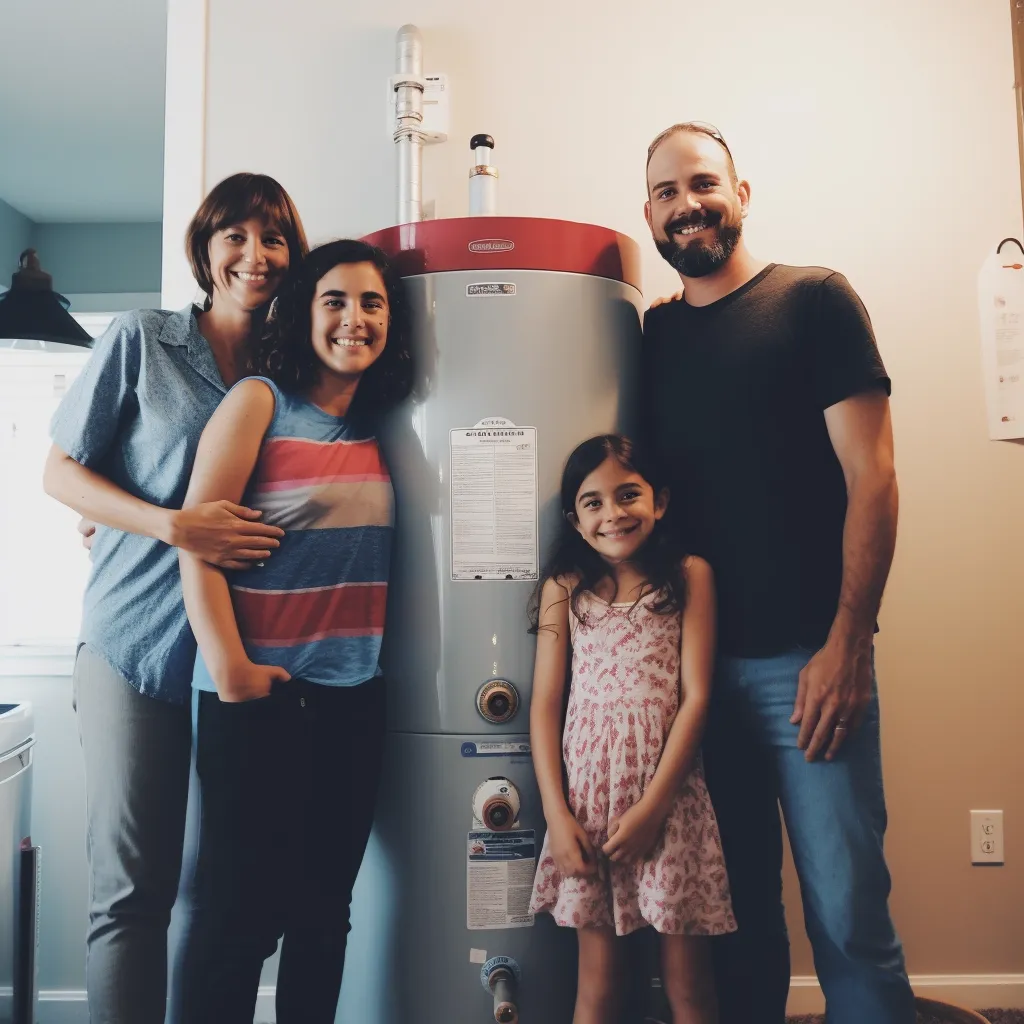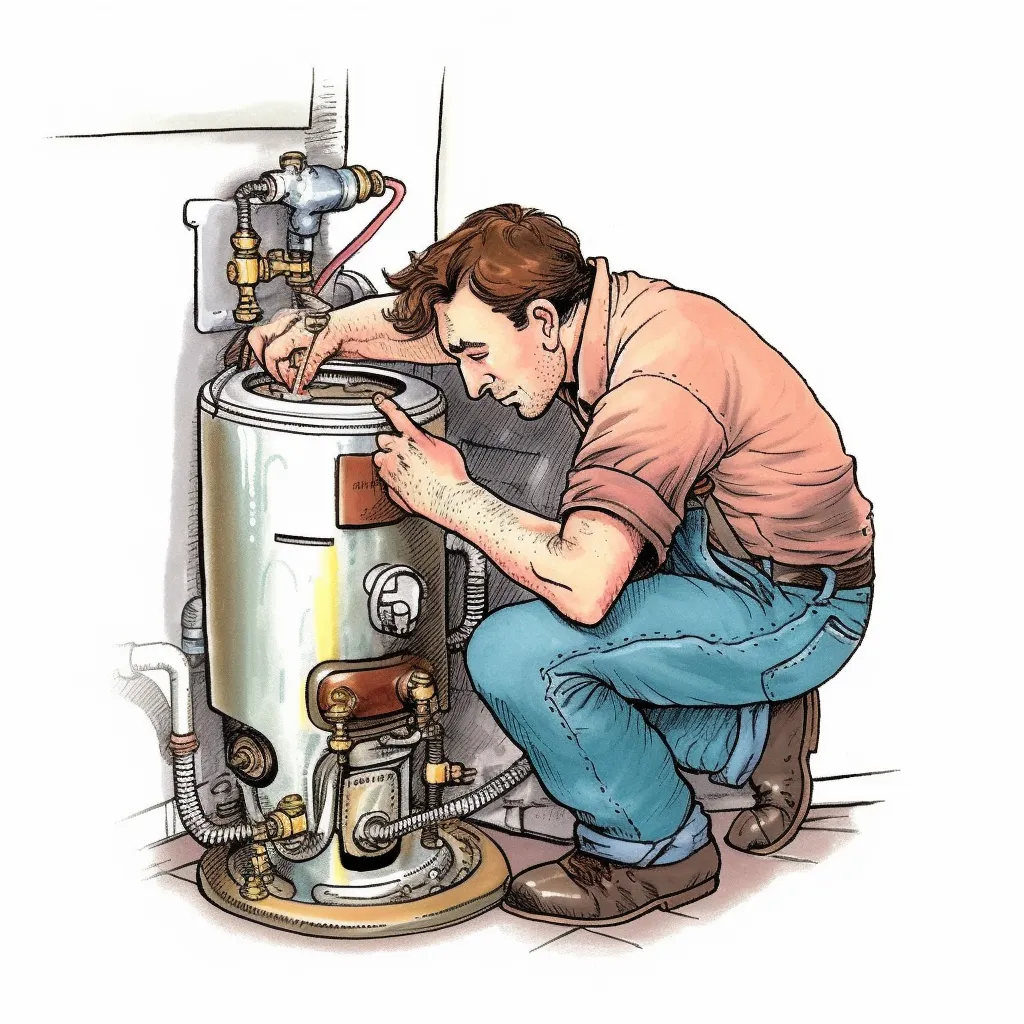Preventing Sediment Accumulation in Concord Water Heaters for Energy Efficiency

In every Concord, New Hampshire, home, water heaters are unsung heroes, tirelessly providing us with hot water for showers, laundry, and dishwashing. Yet, as time passes, sediment buildup can quietly compromise their efficiency, potentially leading to costly repairs or even the need for a replacement. In this comprehensive blog post, we'll explore the ins and outs of sediment accumulation in water heaters, exploring its causes and repercussions, and offer expert solutions to help you steer clear of this common issue. By taking proactive steps to prevent sediment buildup, you can ensure your water heater operates at peak energy efficiency, saving both your hard-earned money and your peace of mind.
Understanding the Intricacies of Sediment Accumulation
Sediment buildup is a gradual process that transpires when minerals and debris present in your water supply settle at the bottom of your water heater's tank. These sediments predominantly consist of minerals like calcium carbonate and magnesium, which are typically found in hard water. Over time, these unwanted deposits amass and form a stubborn layer of insulating material at the tank's base. This seemingly innocuous layer serves as a barrier between the heating element and the water, ultimately leading to several adverse effects.
Unmasking the Culprits of Sediment Buildup
1. Hard Water Woes: The primary instigator of sediment buildup is hard water. If your home's water supply has a high mineral content, you're more susceptible to sediment accumulation. The minerals in hard water tend to precipitate out when heated, settling at the tank's bottom.
2. Excessive Heat: Running your water heater at excessively high temperatures can exacerbate sediment buildup. The hotter the water, the quicker the minerals precipitate and collect within the tank.
3. Neglecting Maintenance: Overlooking regular maintenance, such as flushing the tank, paves the way for unchecked sediment buildup. Routine maintenance is your fortress against sediment-related complications.
Unveiling the Effects of Sediment Buildup
1. Diminished Efficiency: As sediment gathers at the tank's bottom, it functions as an insulator, forcing your water heater to toil harder to heat the water. This results in heightened energy consumption and inflated utility bills.
2. Shortened Lifespan: Sediment accumulation can accelerate the aging of your water heater. The increased workload places more strain on its components, potentially cutting short the appliance's lifespan.
3. Inconsistent Heating: Sediment can create hot spots within the tank, leading to uneven heating. This can translate to temperature fluctuations when you use hot water, making showers uncomfortable and even posing the risk of scalding.
4. Mounting Maintenance Costs: Over time, sediment buildup can induce issues such as corrosion and the formation of sediment pockets that can wreak havoc on the tank and other vital components. This translates into expensive repairs or the necessity to replace your water heater entirely.
Battling Sediment Buildup: Your Authoritative Solutions
To maintain an energy-efficient water heater and extend its life, it's crucial to proactively tackle sediment buildup. Here are some expert solutions to ward off this common problem:
1. Embrace a Water Softener: If your Concord abode is plagued by hard water, consider installing a water softener. These devices are adept at removing the minerals responsible for sediment buildup, significantly reducing the chances of accumulation in your water heater.
2. Moderate Water Temperature: Opt for a moderate water heater temperature, ideally around 120°F or 49°C. Lowering the temperature diminishes the rate at which minerals precipitate, effectively slowing down sediment buildup.
3. Regular Flushing: Flushing your water heater's tank stands as one of the most potent methods to fend off sediment accumulation. Follow these steps to expertly flush your water heater:
a. Deactivate the power supply (electricity or gas) to the water heater.
b. Shut off the cold water supply to the tank.
c. Affix a garden hose to the drain valve at the tank's base.
d. Position the opposite end of the hose in a suitable drainage area or floor drain.
e. Open the pressure relief valve on the top of the tank to facilitate air intake and aid in draining.
f. Release the drain valve, allowing hot water to flow out. Exercise caution as the water will be hot.
g. After the tank empties, close the drain valve and reactivate the cold water supply.
h. Permit the tank to partially refill, then repeat the draining process until the water runs clear. This might necessitate several cycles.
i. Finally, close the pressure relief valve, reactivate the power supply, and your water heater is good to go.
4. Install a Sediment Filter: Contemplate installing a sediment filter in the water supply line leading to your water heater. These nifty filters can apprehend and prevent many minerals and debris from infiltrating the tank.
5. Routine Inspections: Regularly inspect your water heater for any telltale signs of sediment buildup, corrosion, or other complications. Promptly address any issues to nip them in the bud.


Unearthing the Impact of Sediment Buildup on Energy Efficiency
Sediment buildup in water heaters carries substantial repercussions, with reduced energy efficiency ranking high among them. As sediment piles up at the tank's base, it erects a thermal barricade that hinders the heating process. Consequently, your water heater is forced to toil harder and consume more energy to maintain the desired water temperature.
This supplementary energy expenditure not only inflates your utility bills but also exerts a more pronounced environmental toll. By proactively tackling sediment buildup, you're contributing to a more energy-efficient and eco-conscious household.
Extending the Lifespan of Water Heaters
The longevity of your water heater is another critical aspect to consider. Water heaters represent a significant investment, and elongating their lifespan can translate into substantial savings over the years. Sediment buildup accelerates the wear and tear on the appliance. The accumulation of mineral deposits not only disrupts the heating process but also fosters corrosion within the tank.
Corrosion poses a formidable threat to water heaters, potentially leading to leaks and irreparable damage. When sediment buildup goes unchecked, it can compromise the tank's structural integrity, forcing you to face the unexpected cost of prematurely replacing your water heater. To safeguard your investment and reduce the environmental impact of manufacturing and disposing of appliances, addressing sediment buildup is imperative.
Elevated Comfort and Safety
Beyond the evident energy-related consequences, sediment buildup can affect the comfort and safety of your home. Hot water passing through sediment pockets can become overheated, causing irregular water temperatures. This inconsistency can render your showers uncomfortable and, in extreme cases, result in scalding.
Moreover, sediment buildup can impede the functionality of the pressure relief valve. If this valve fails to operate correctly, it can pose a safety hazard, as it won't release excess pressure, potentially leading to a catastrophic tank failure. Maintaining your water heater by addressing sediment buildup guarantees consistent hot water temperatures and fosters a safer home environment.
Holistic Solutions for Energy-Efficient Water Heaters
To further augment the energy efficiency of your water heater and extend its life, consider the following tips:
1. Anode Rod Inspection: The anode rod in your water heater acts as a sacrificial component, combating corrosion. Regularly inspect and replace the anode rod as needed, especially in hard water conditions where it's prone to deterioration.
2. Temperature and Pressure Relief Valve (T&P Valve): Ensure the T&P valve is in tip-top condition. This valve's role is to release excess pressure and forestall tank explosions. Periodically test the valve by lifting the lever and allowing it to snap back into place.
3. Tank Insulation: Contemplate adding an insulating blanket to your water heater. This nifty addition can curtail heat loss, further heightening energy efficiency.
4. Professional Maintenance: While you can handle some maintenance tasks yourself, it's advisable to schedule annual professional maintenance for your water heater. A qualified technician can conduct a thorough inspection, address sediment buildup, and make any necessary adjustments or repairs.
The Weight of Sediment Buildup
Sediment buildup in water heaters is a common predicament with far-reaching consequences, including reduced energy efficiency and escalating maintenance expenses. By unraveling the causes and effects of sediment buildup and implementing the expert solutions outlined in this guide, you're securing an energy-efficient and dependable water heating system for years to come.
Regular flushing and maintenance serve as your trusty allies in keeping sediment at bay, offering the dual benefits of lower energy bills and avoidance of costly repairs. Additionally, you're contributing to a more sustainable and energy-efficient household, aligning with the eco-conscious ethos of Concord. So invest your time and effort today to reap the rewards of a resilient, cost-effective, and environmentally-friendly water heating system.

Ready to Solve Your Plumbing Needs?
For reliable, expert plumbing services tailored to the needs of Concord and its neighboring cities, look no further than EMR Plumbing and Heating. We’re here for you 24/7, ensuring that your plumbing is always in top condition.
Call us today to schedule your service!
Business Hours: Monday - Sunday, 24 Hours
Phone Number: (603) 634-8285
Location: Concord, N.H., serving all surrounding areas.
Trust your local experts at EMR Plumbing and Heating for professional, timely, and efficient plumbing solutions.
GET IN FULL TOUCH
PHONE: (603) 634-8285
EMAIL:
ryan@waterheaterconcord.com
EMR Plumbing and Heating
Concord, N.H. 03303
